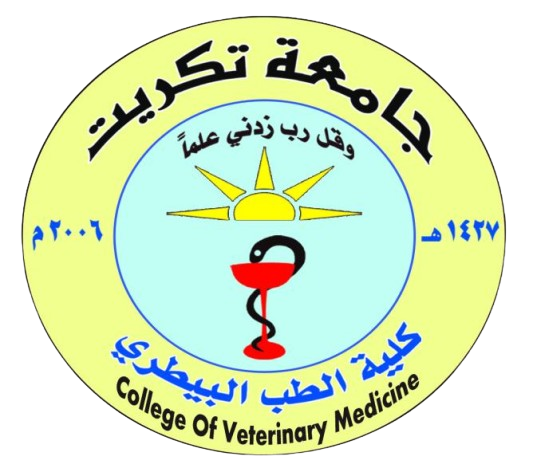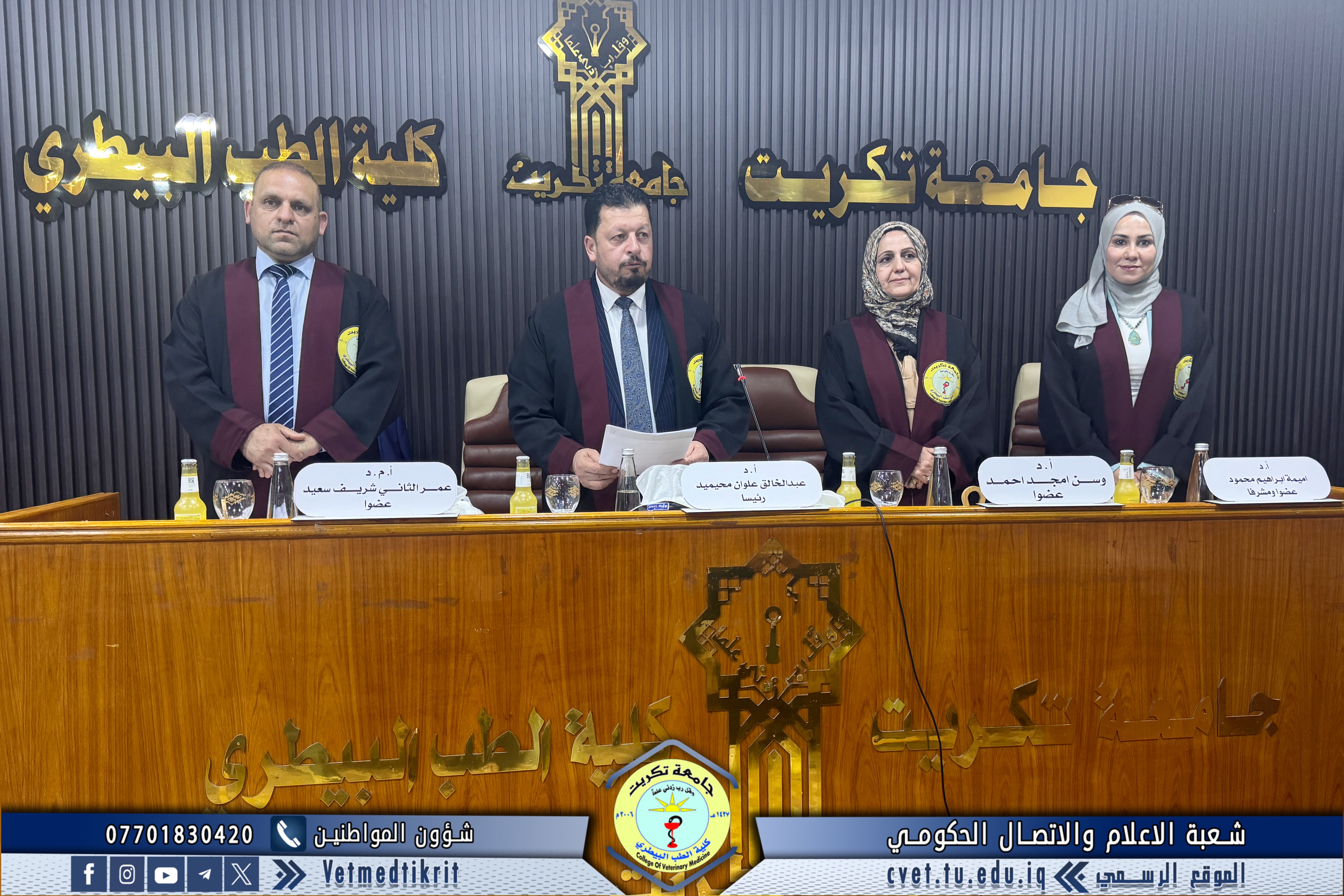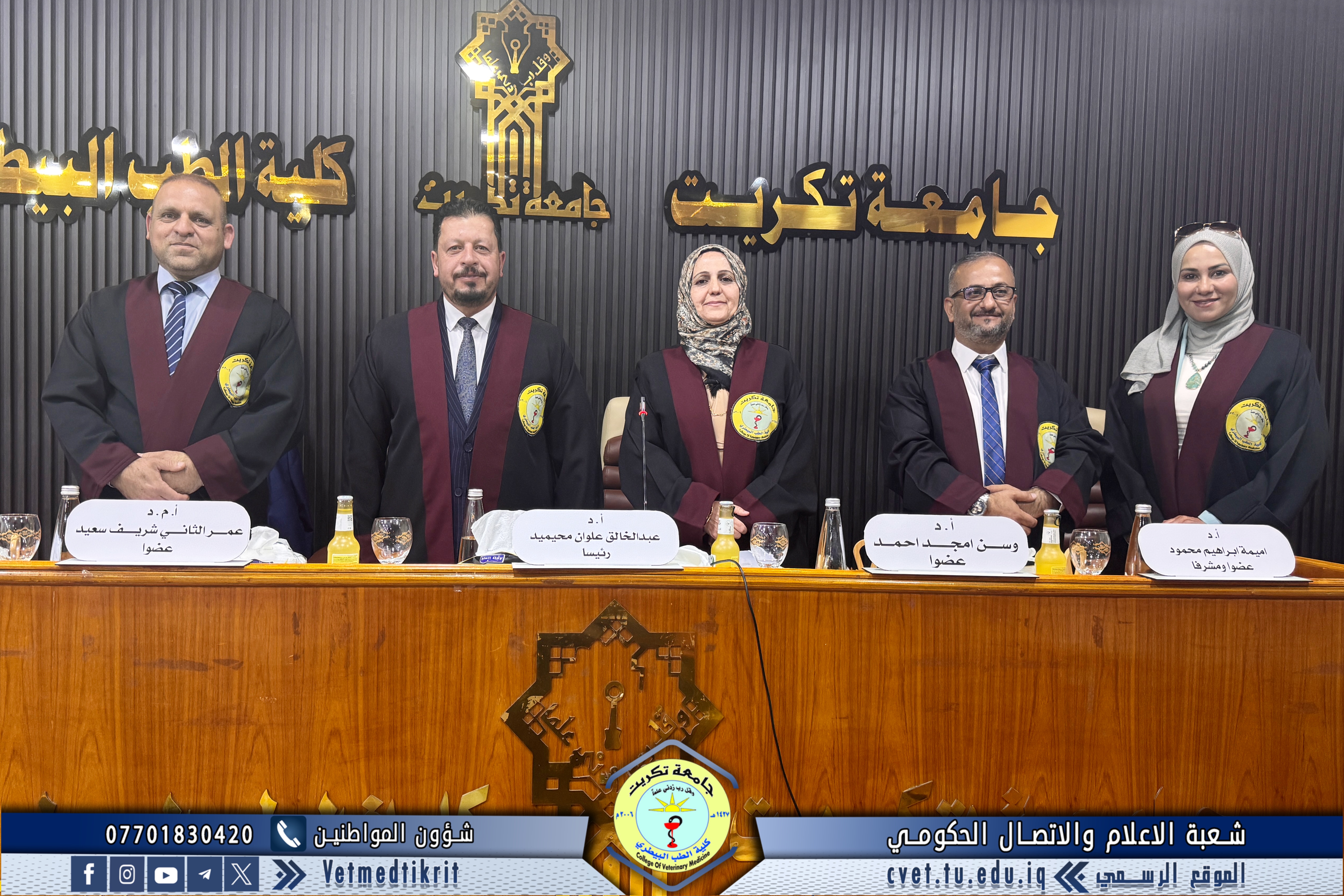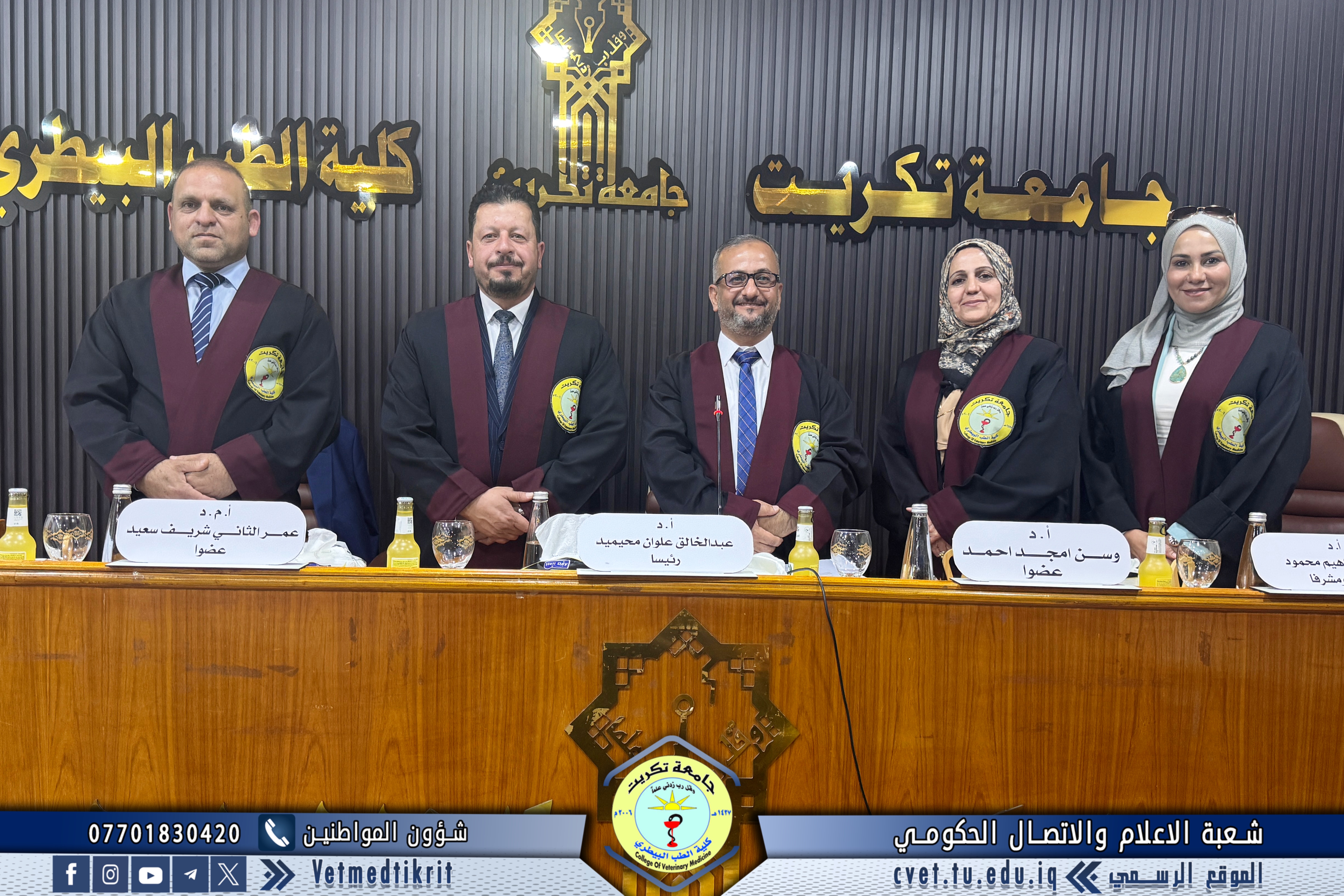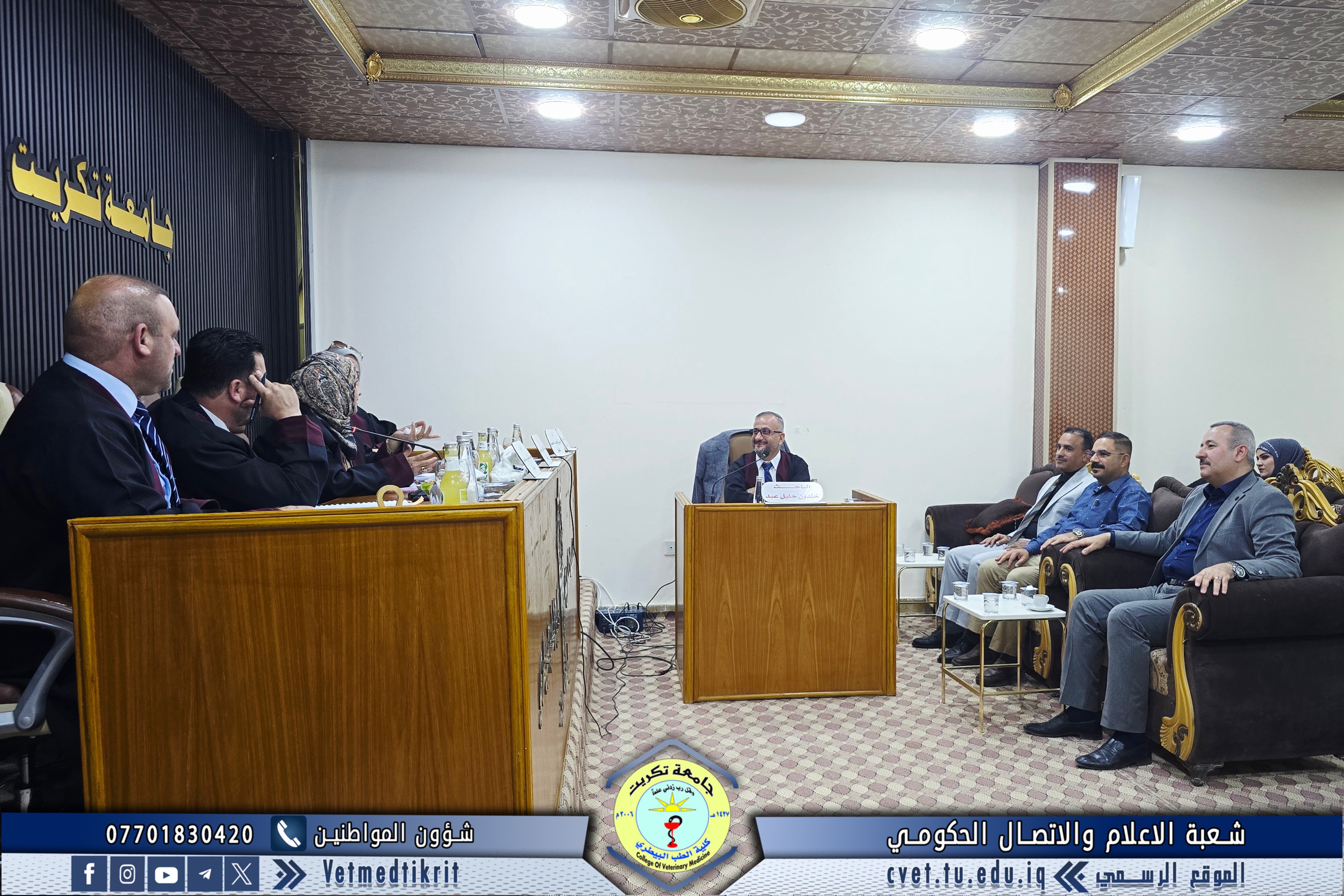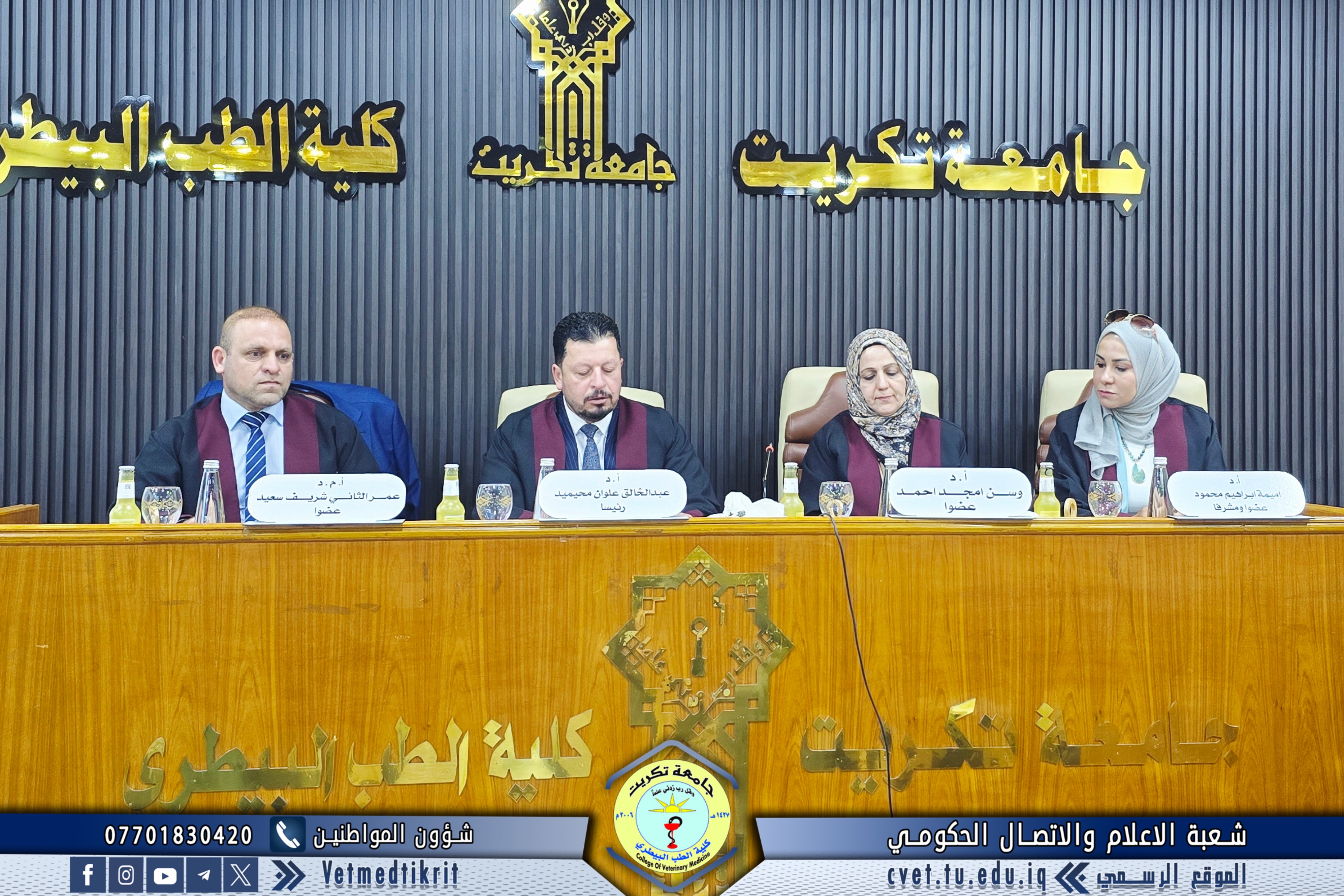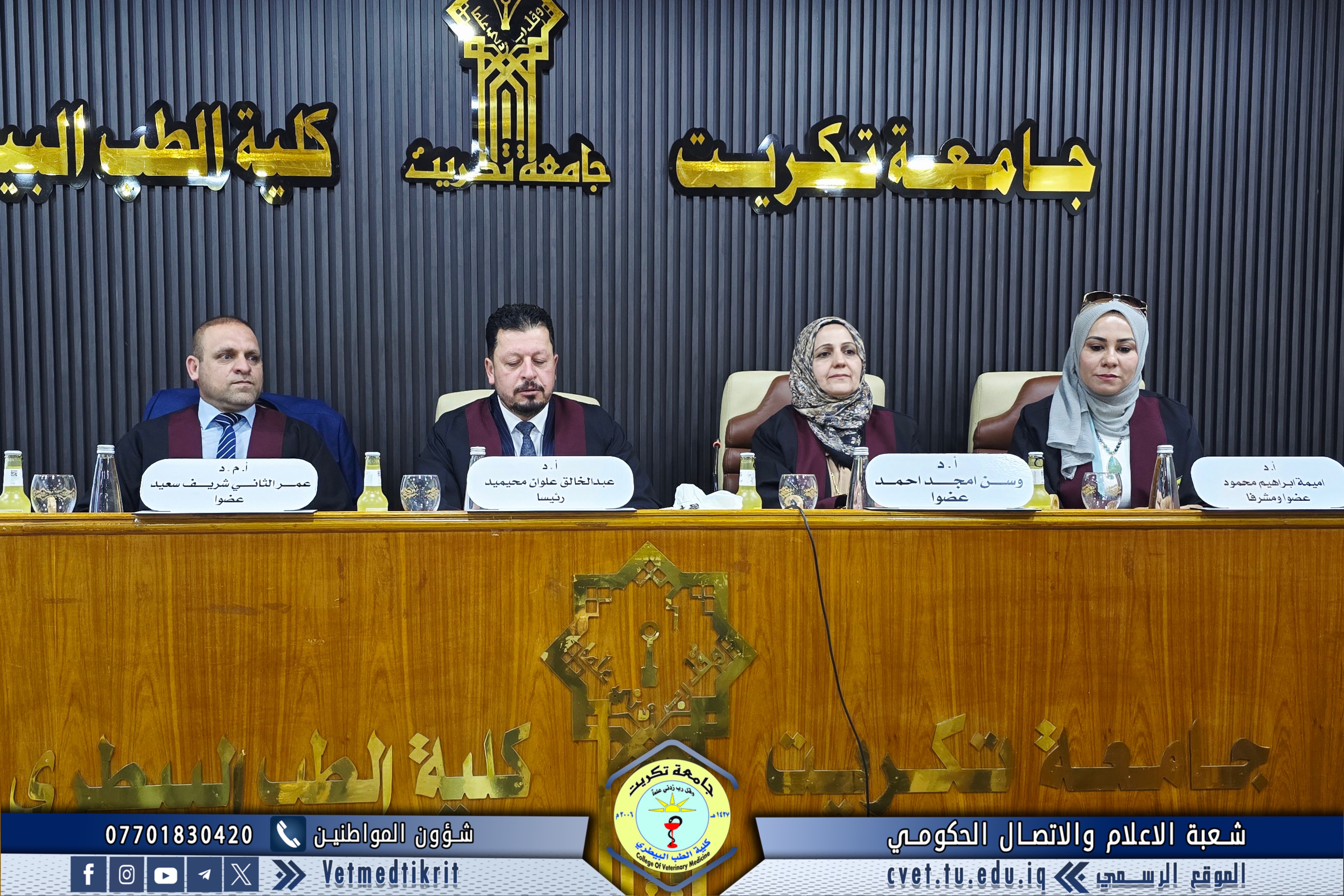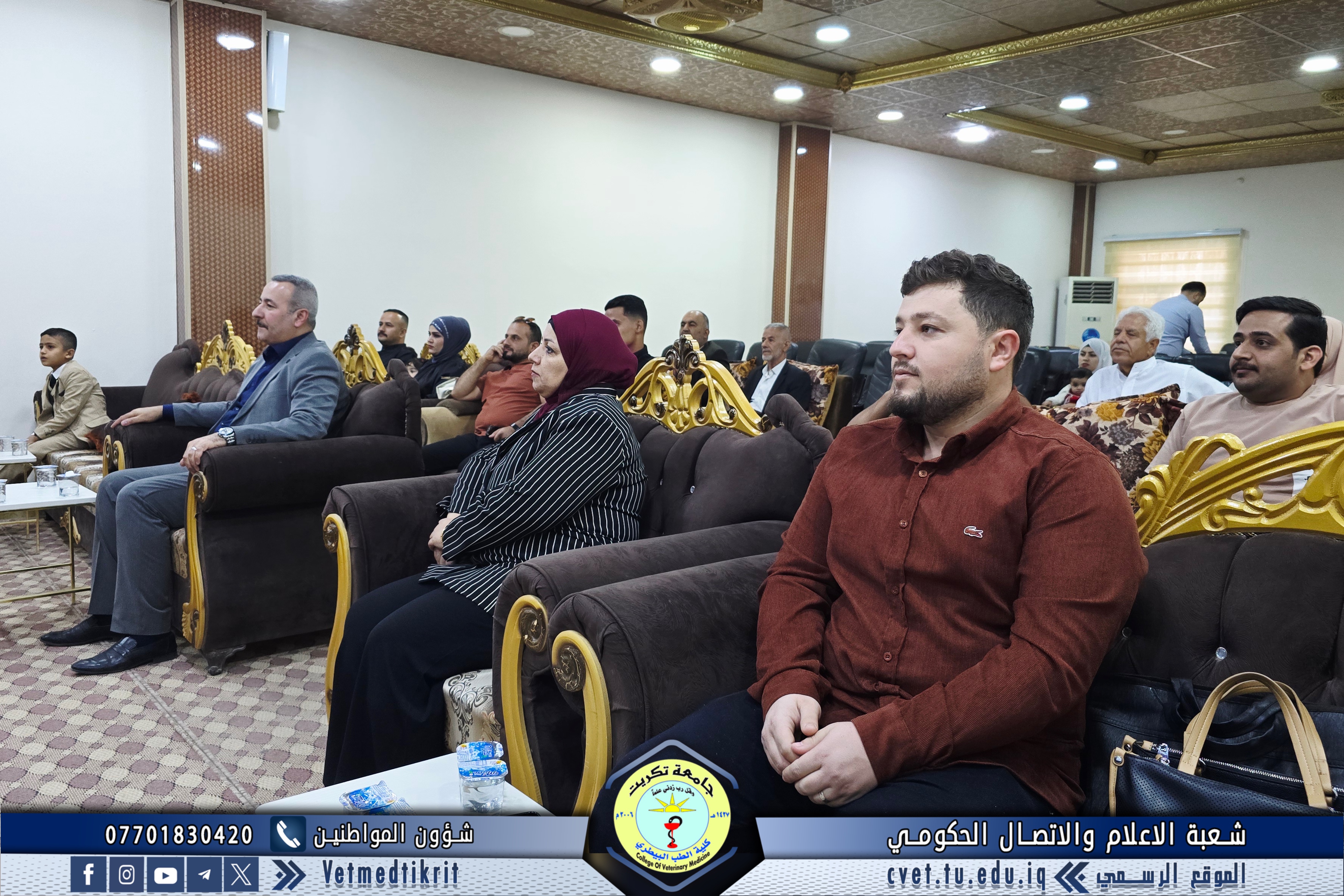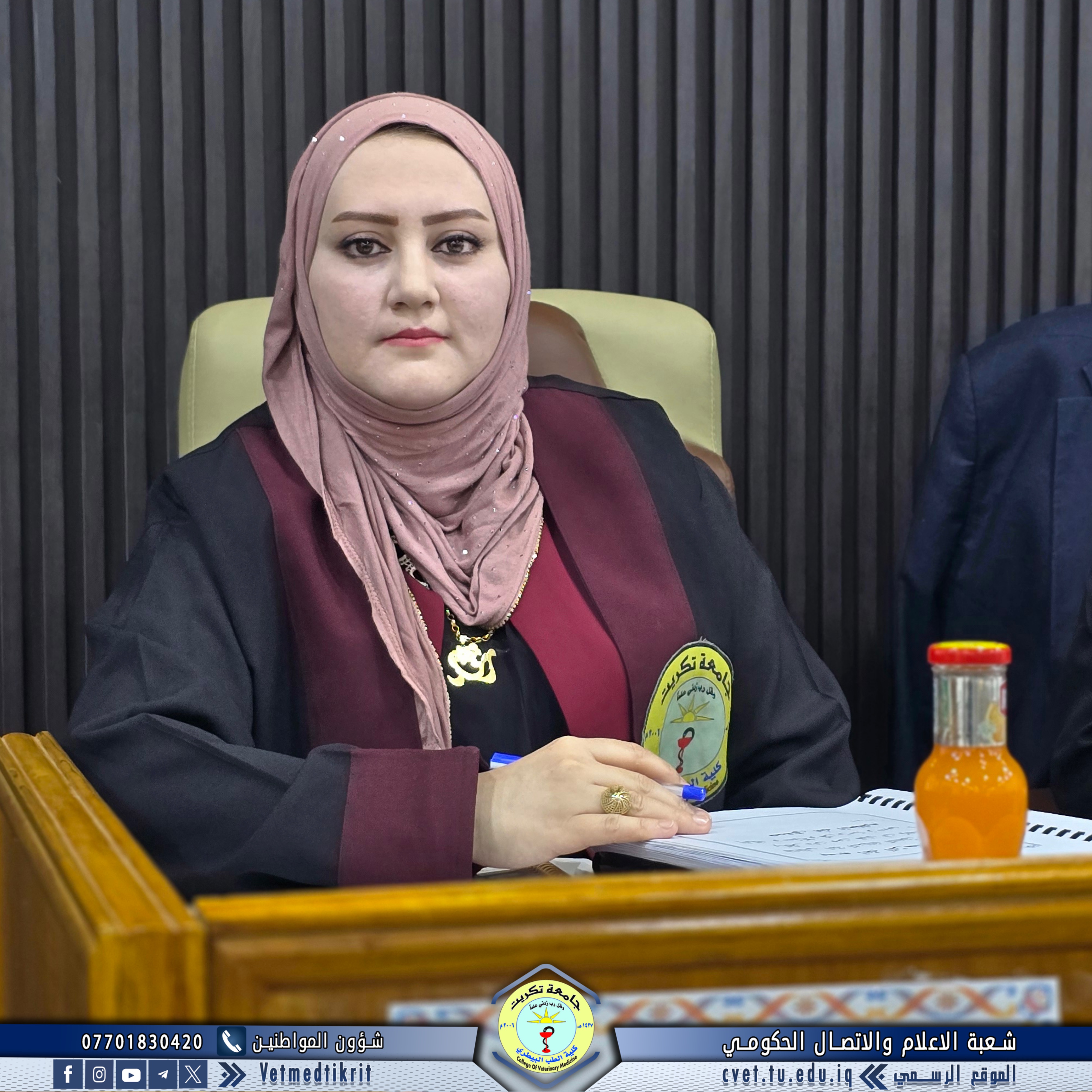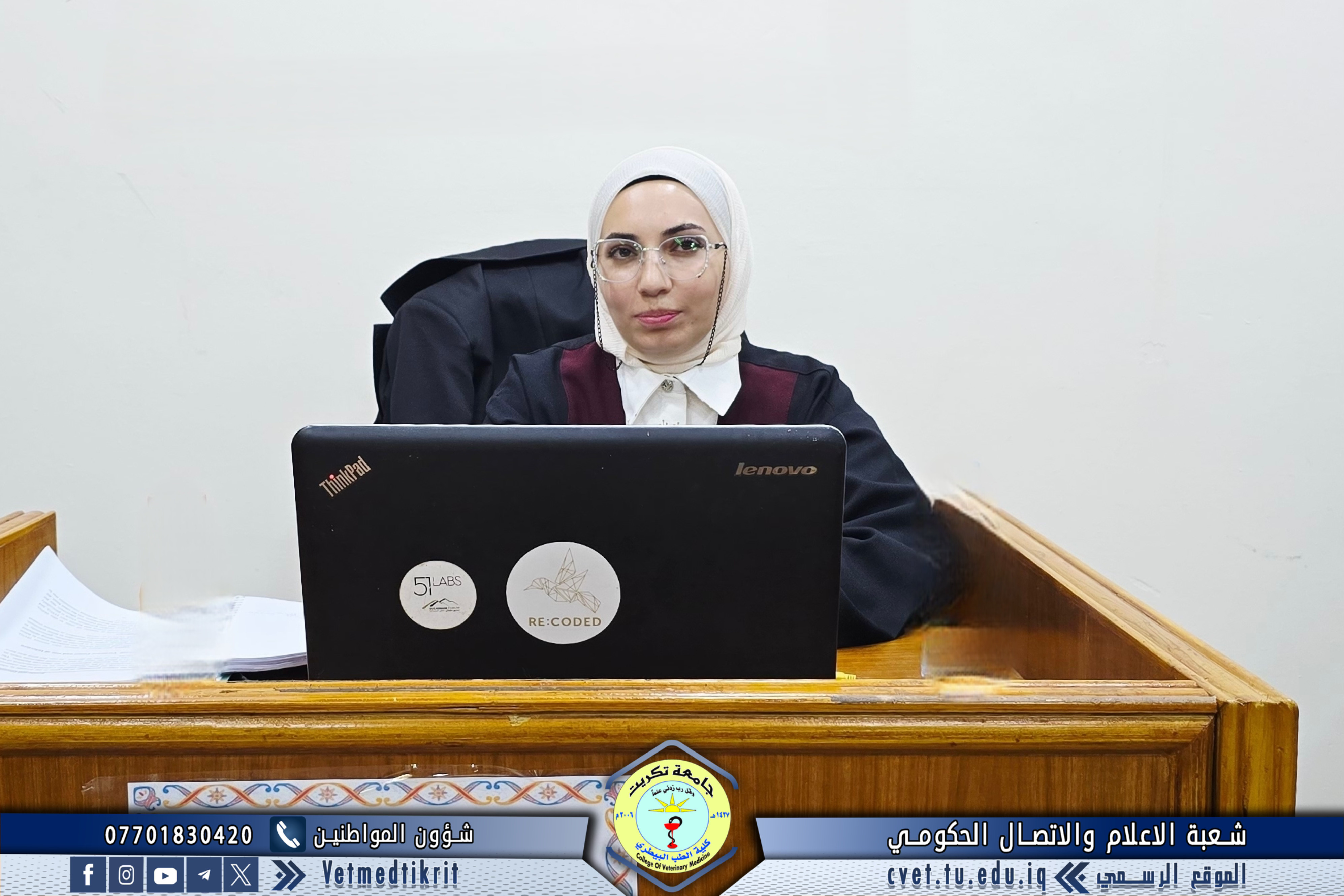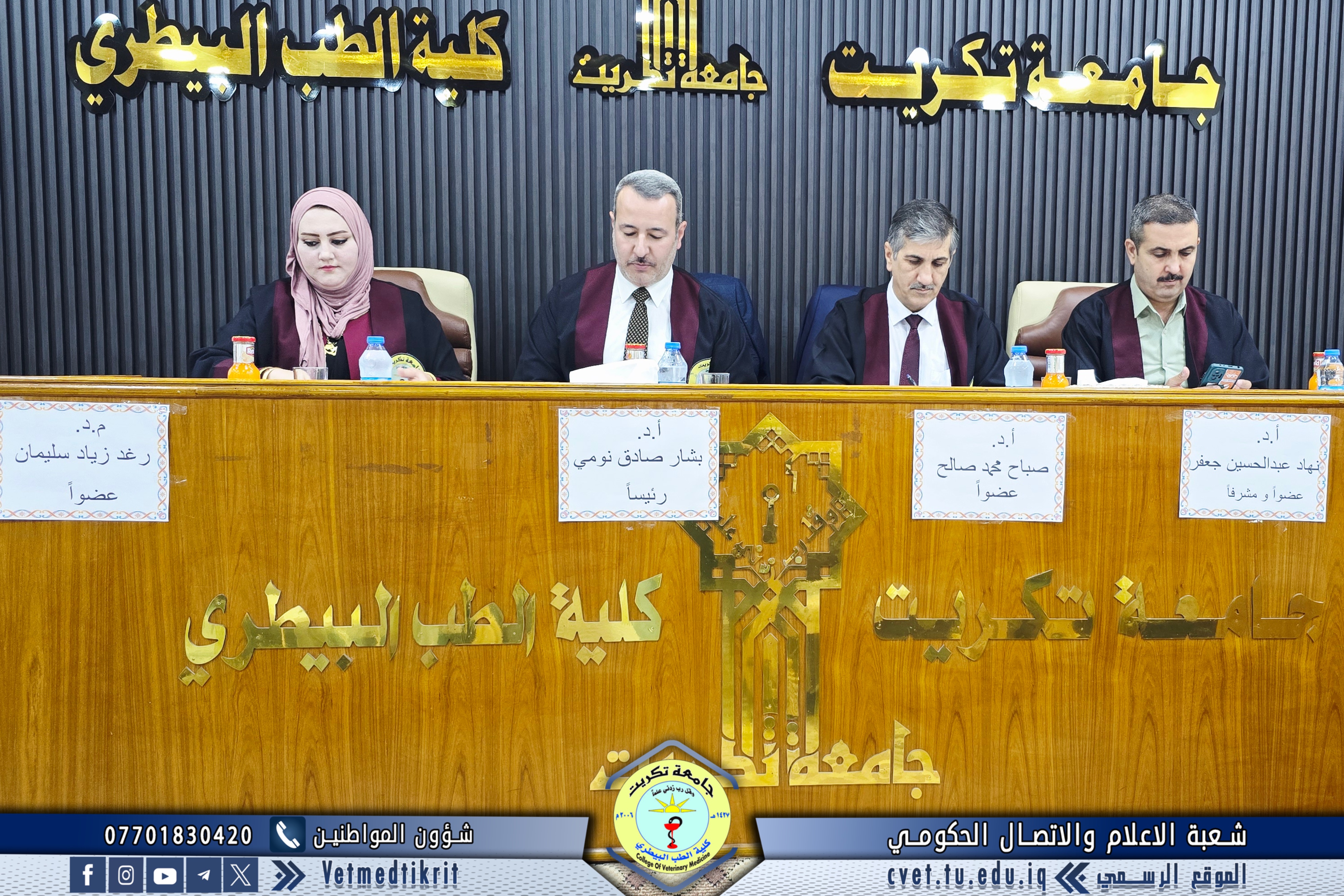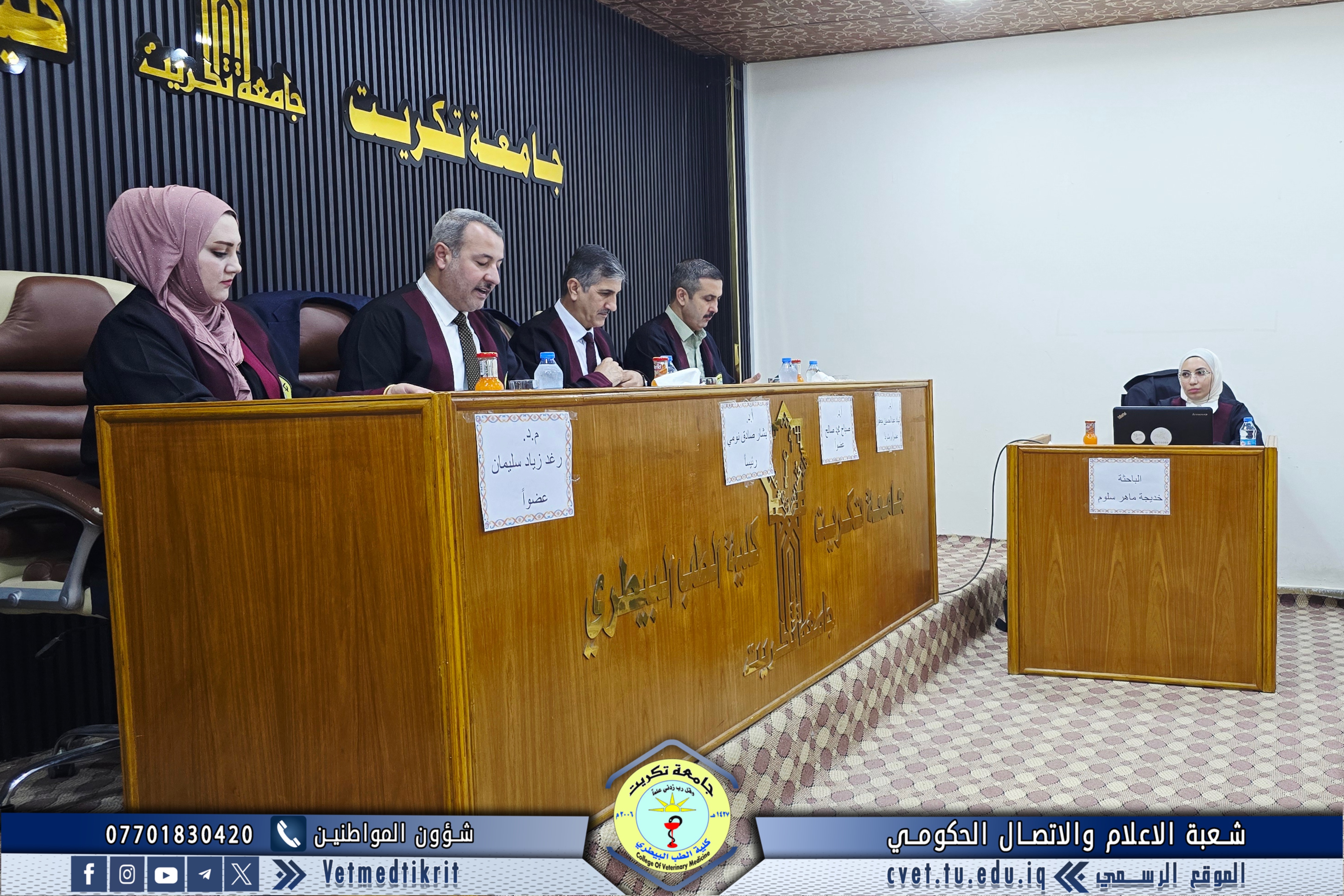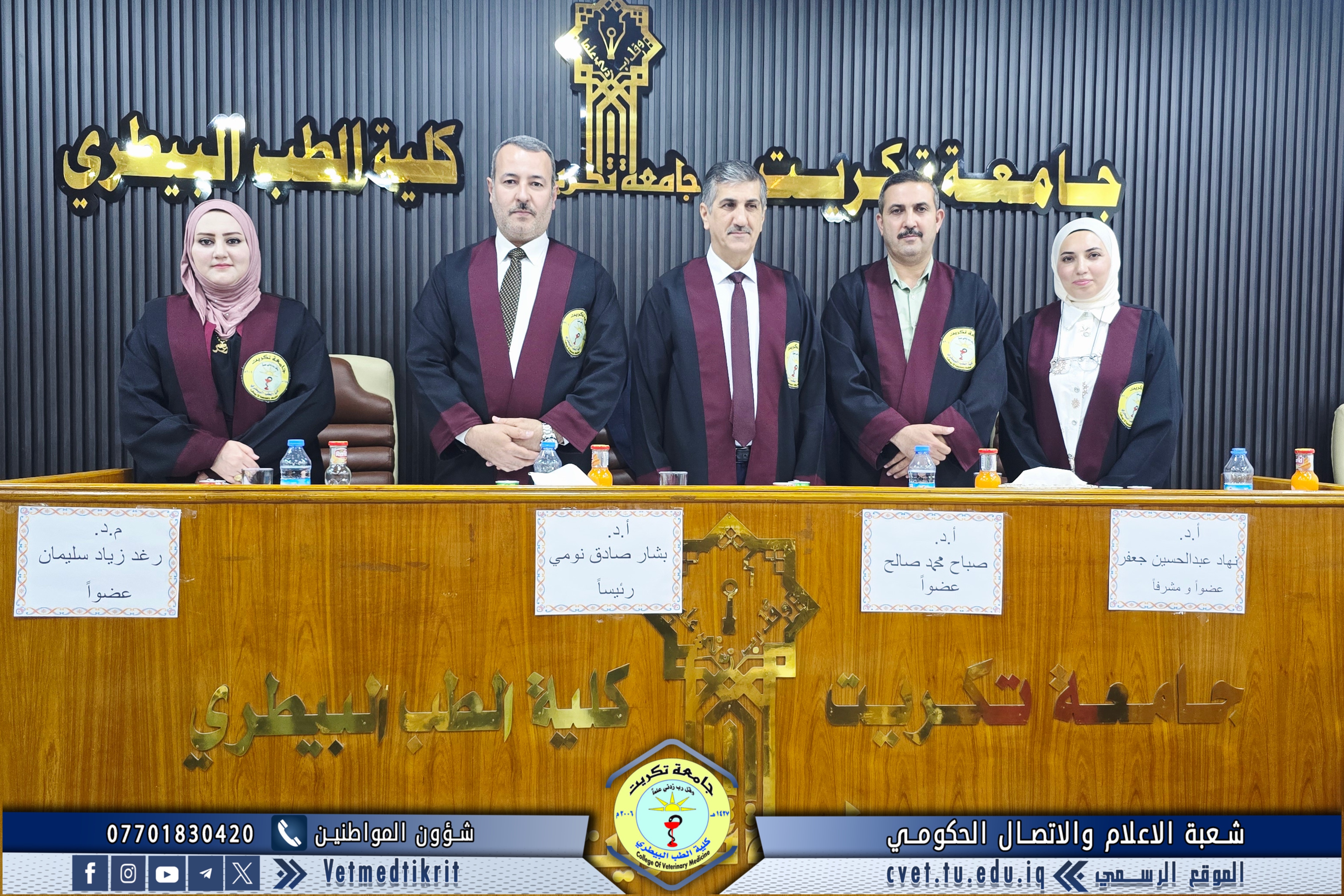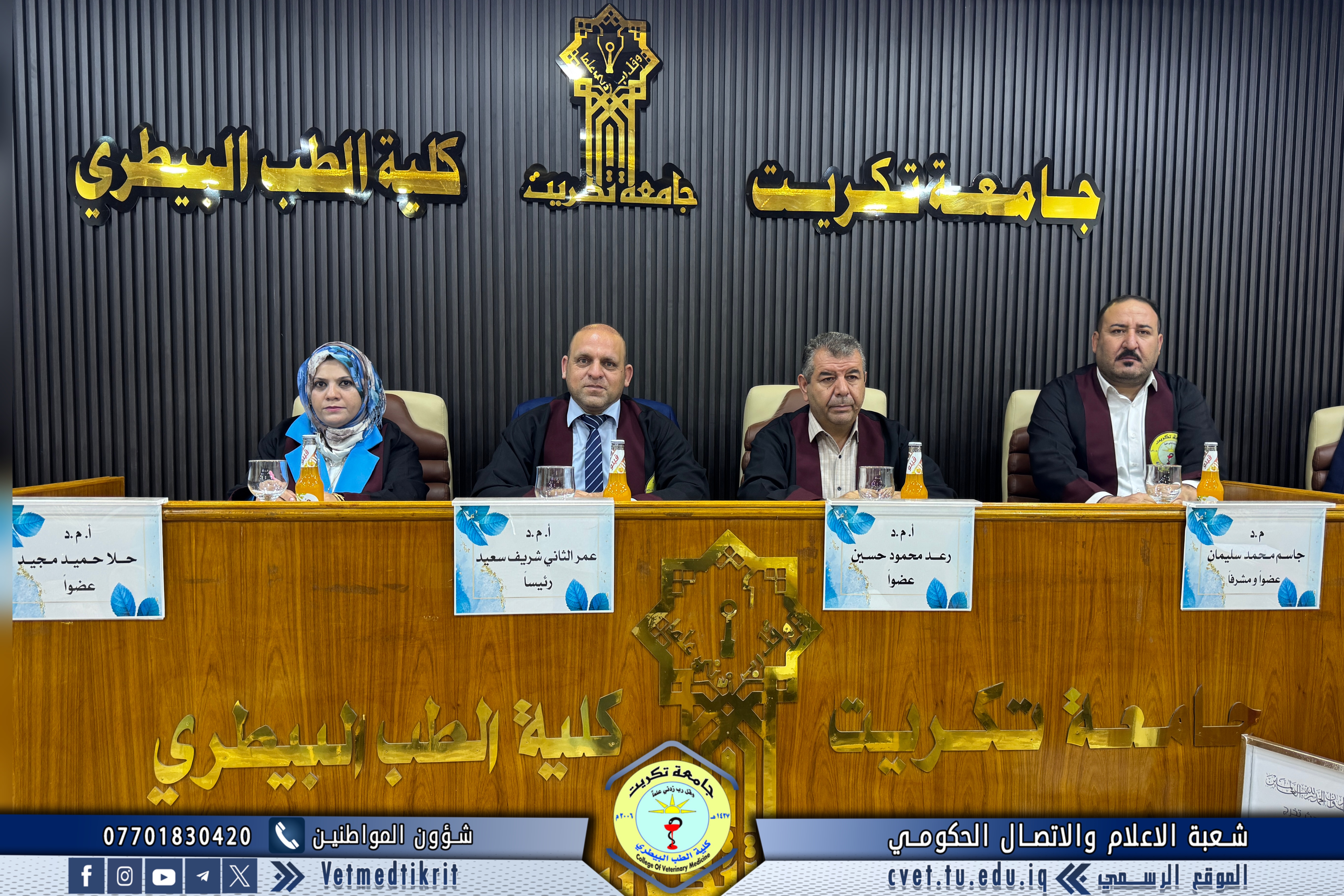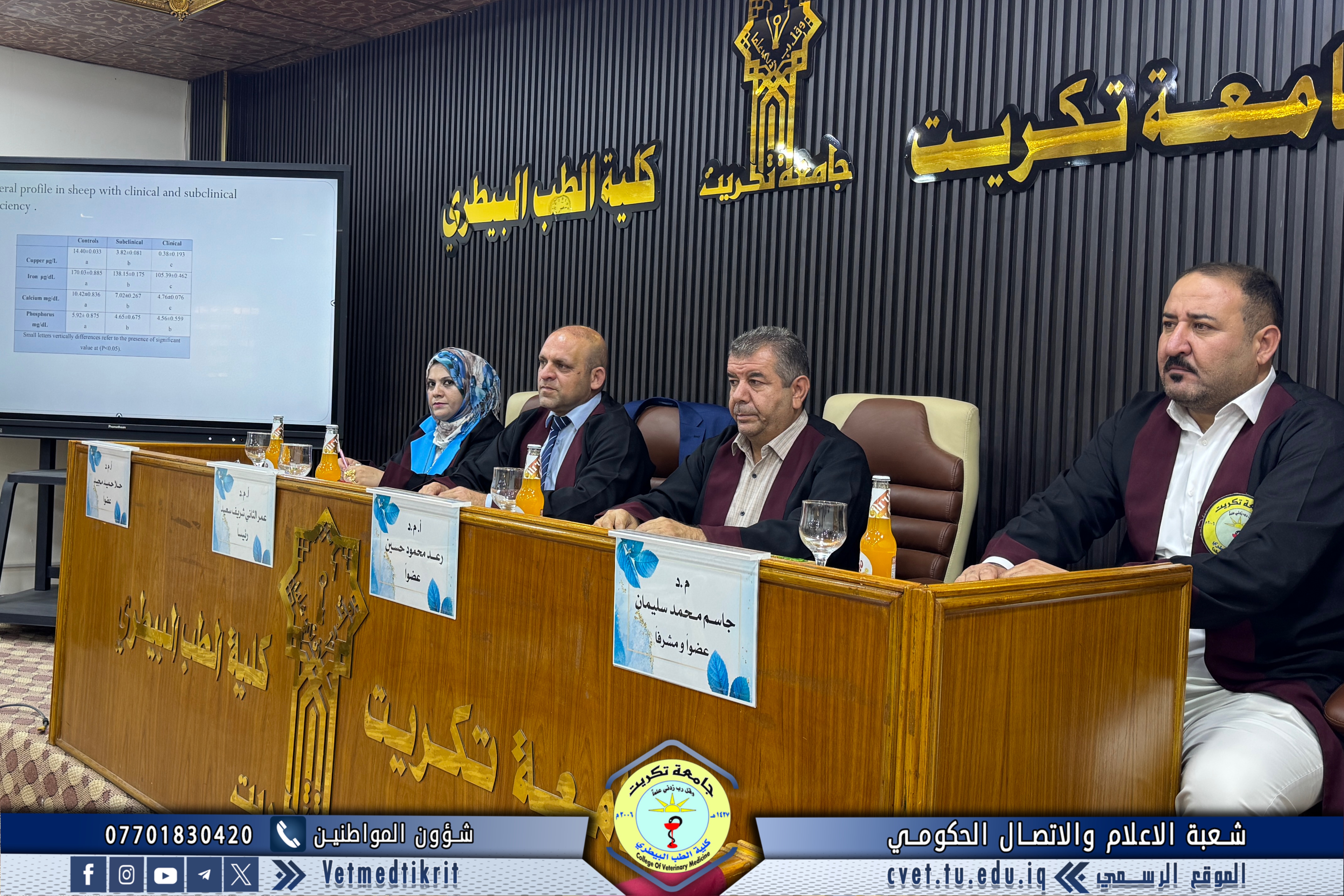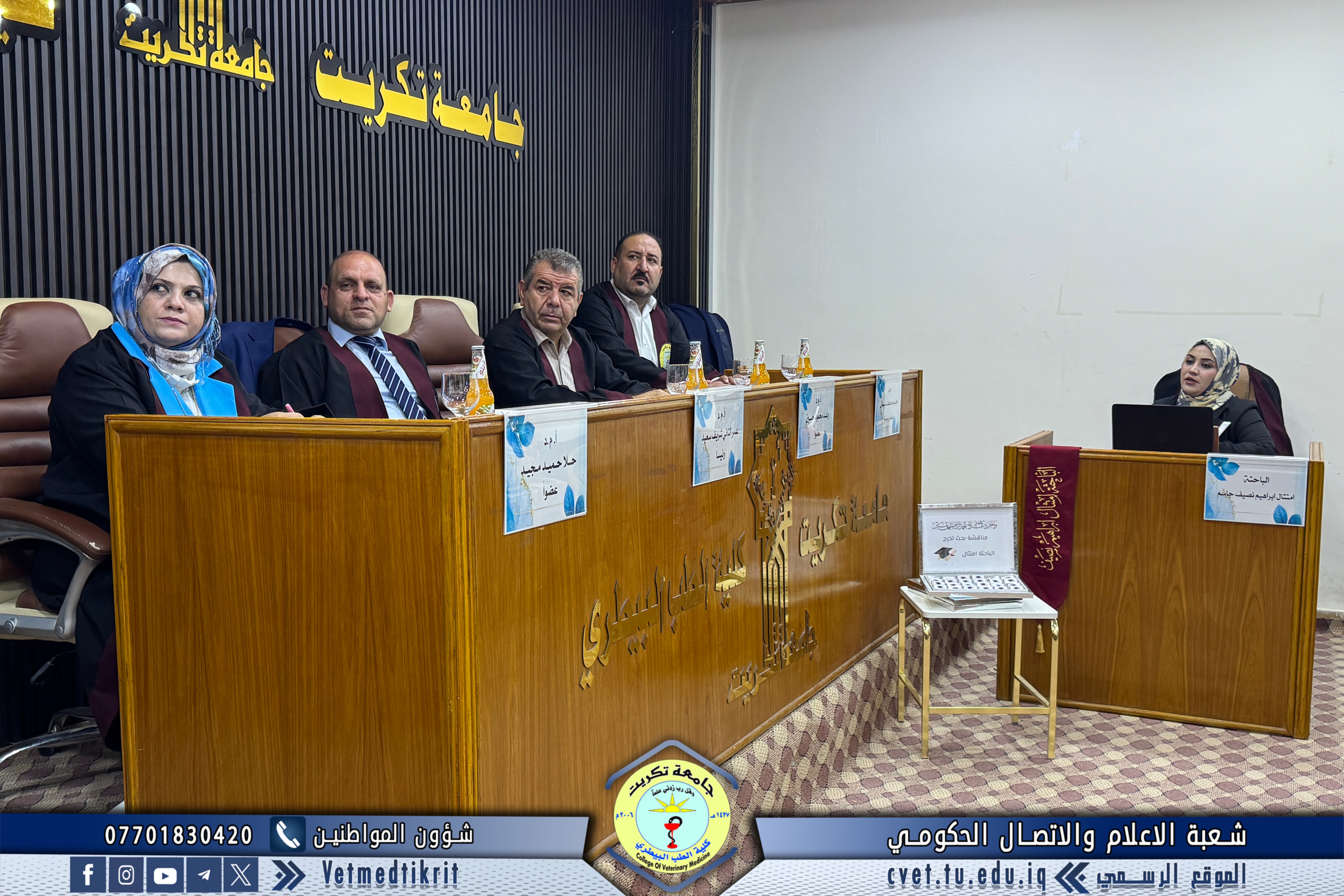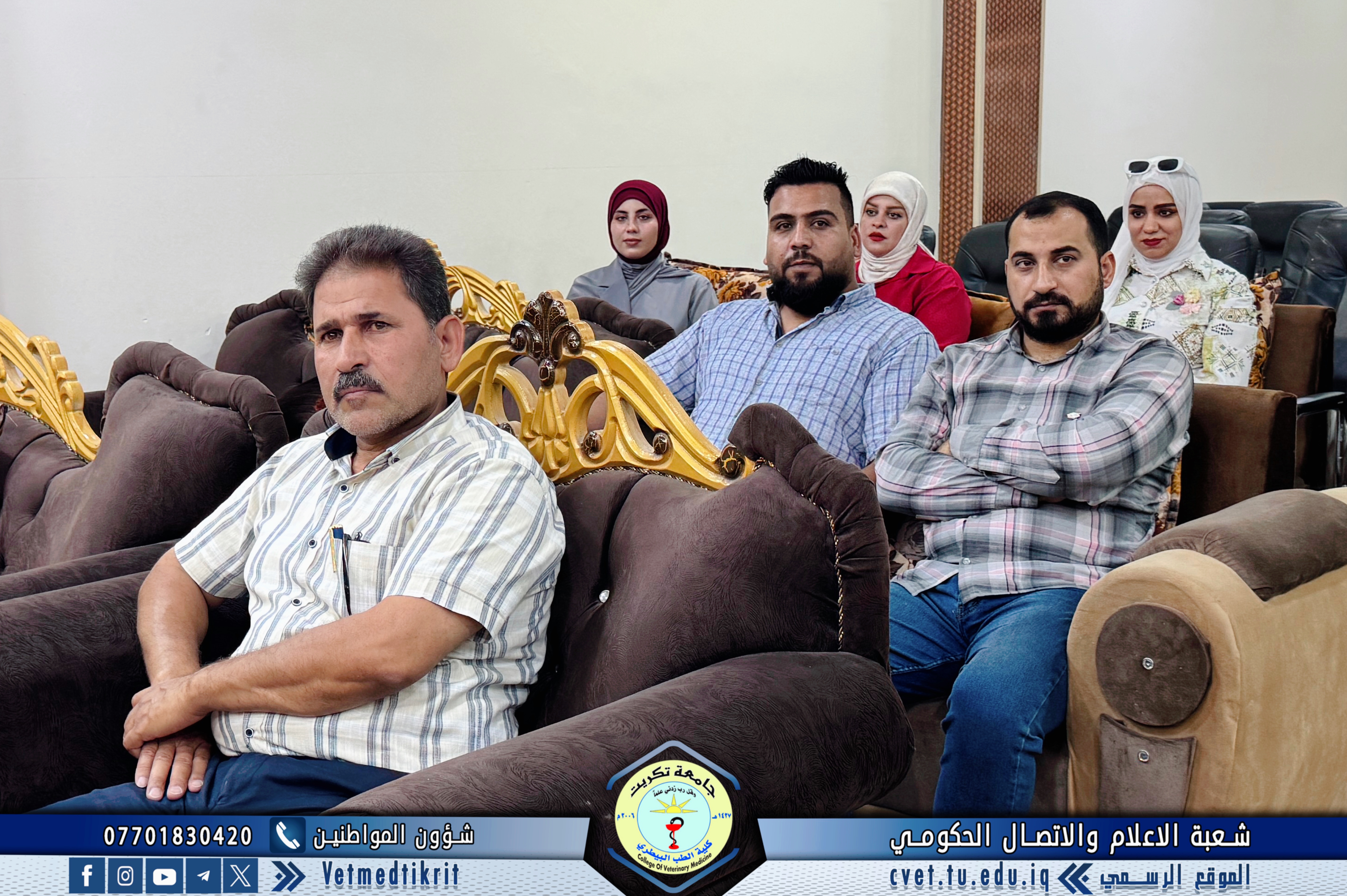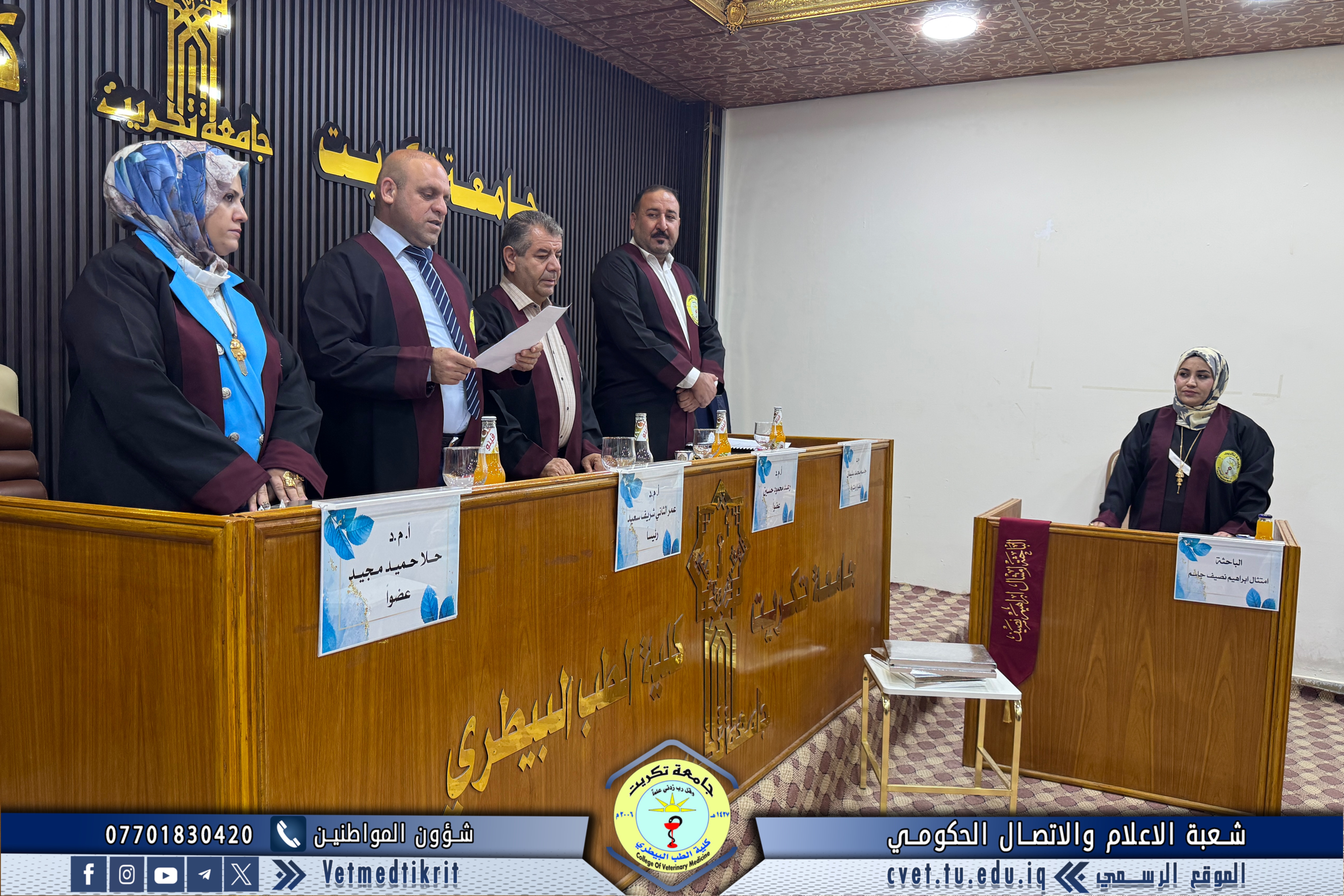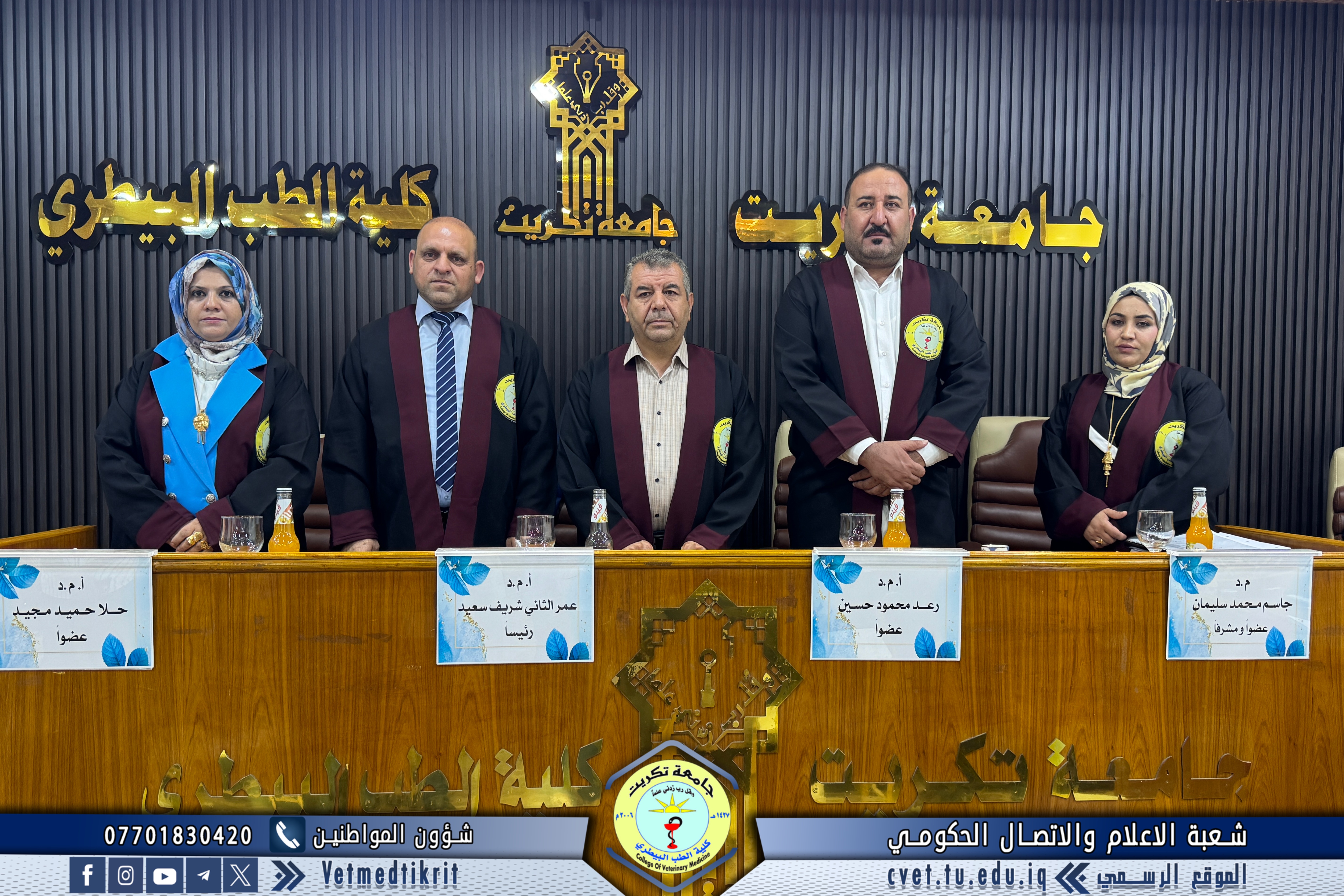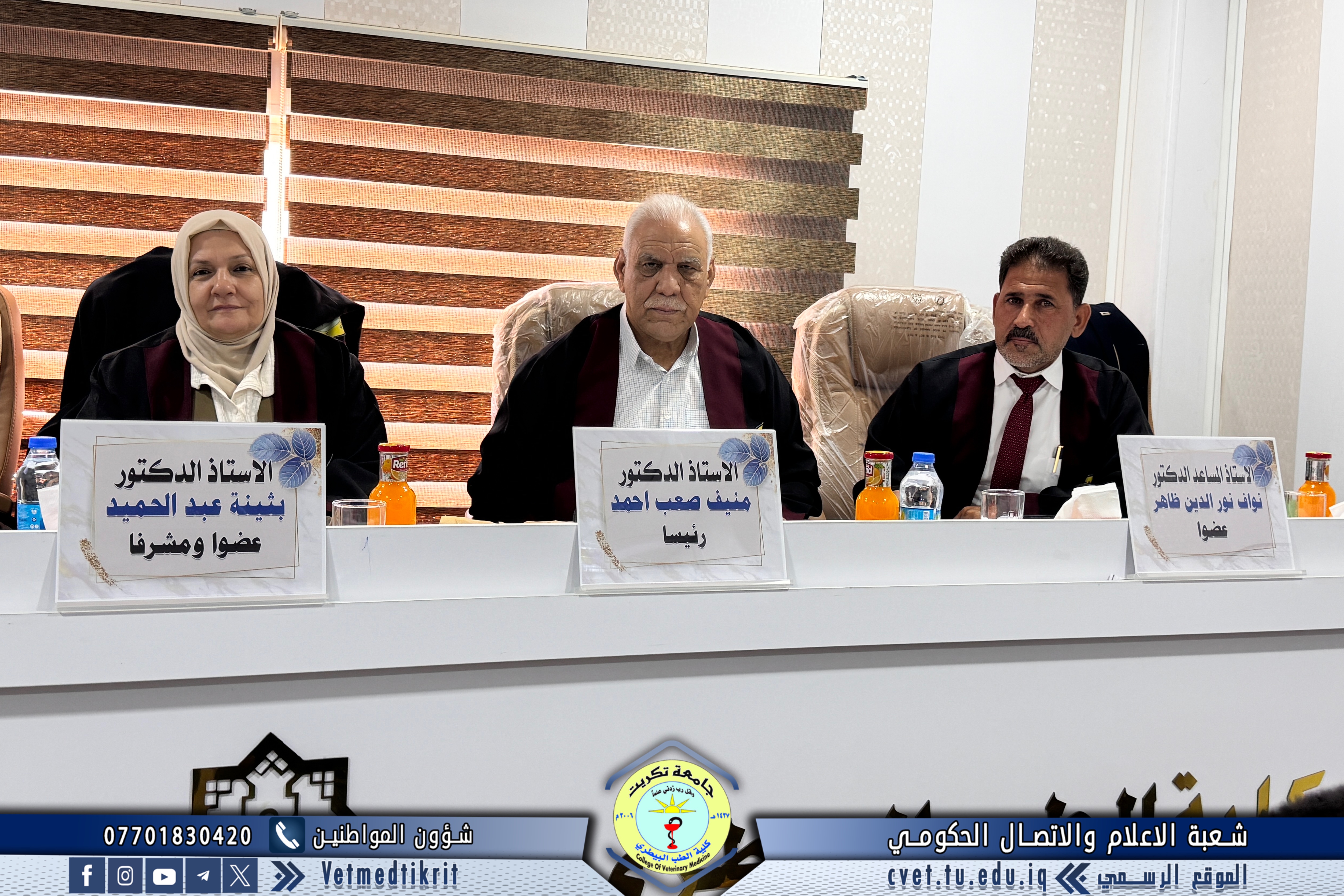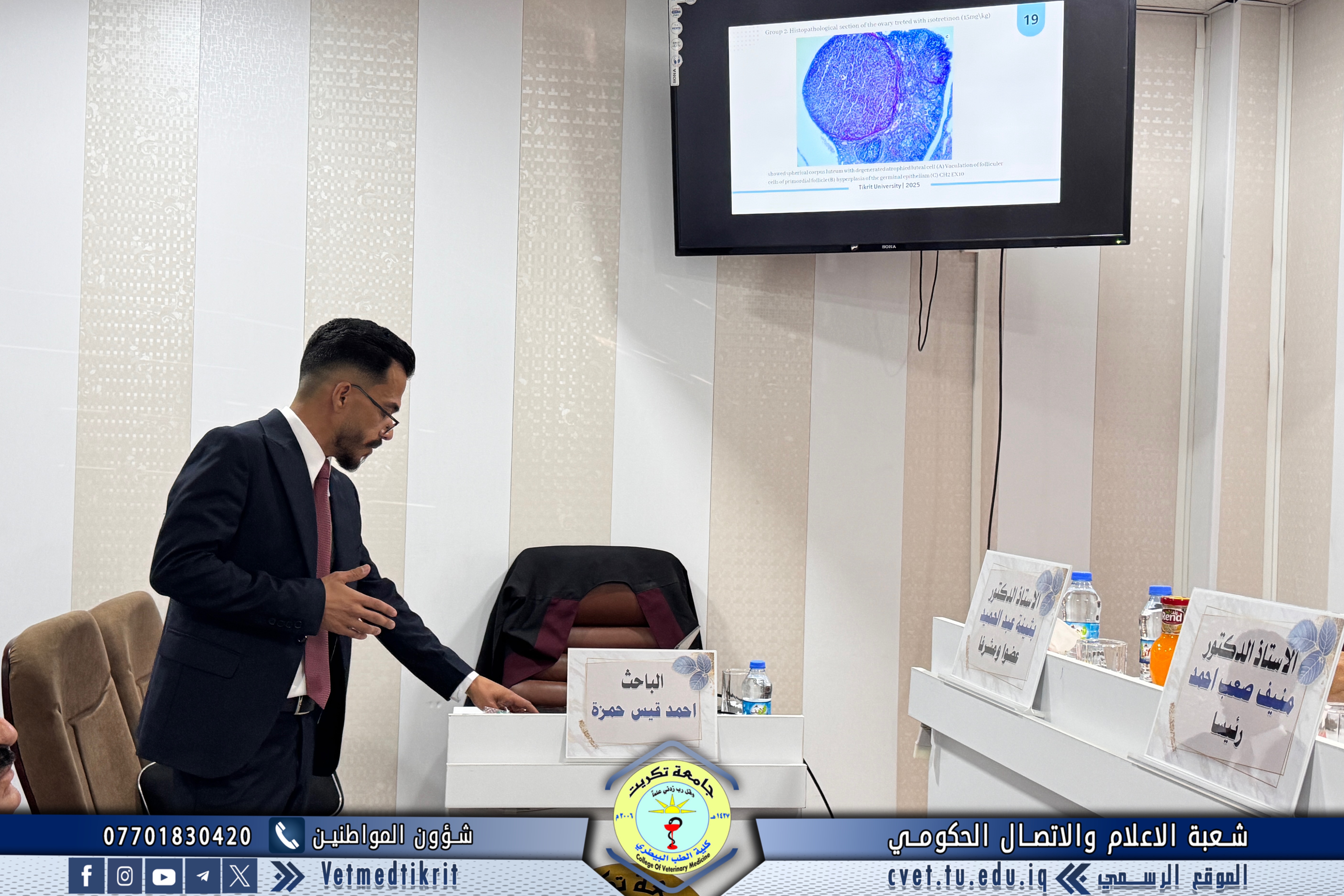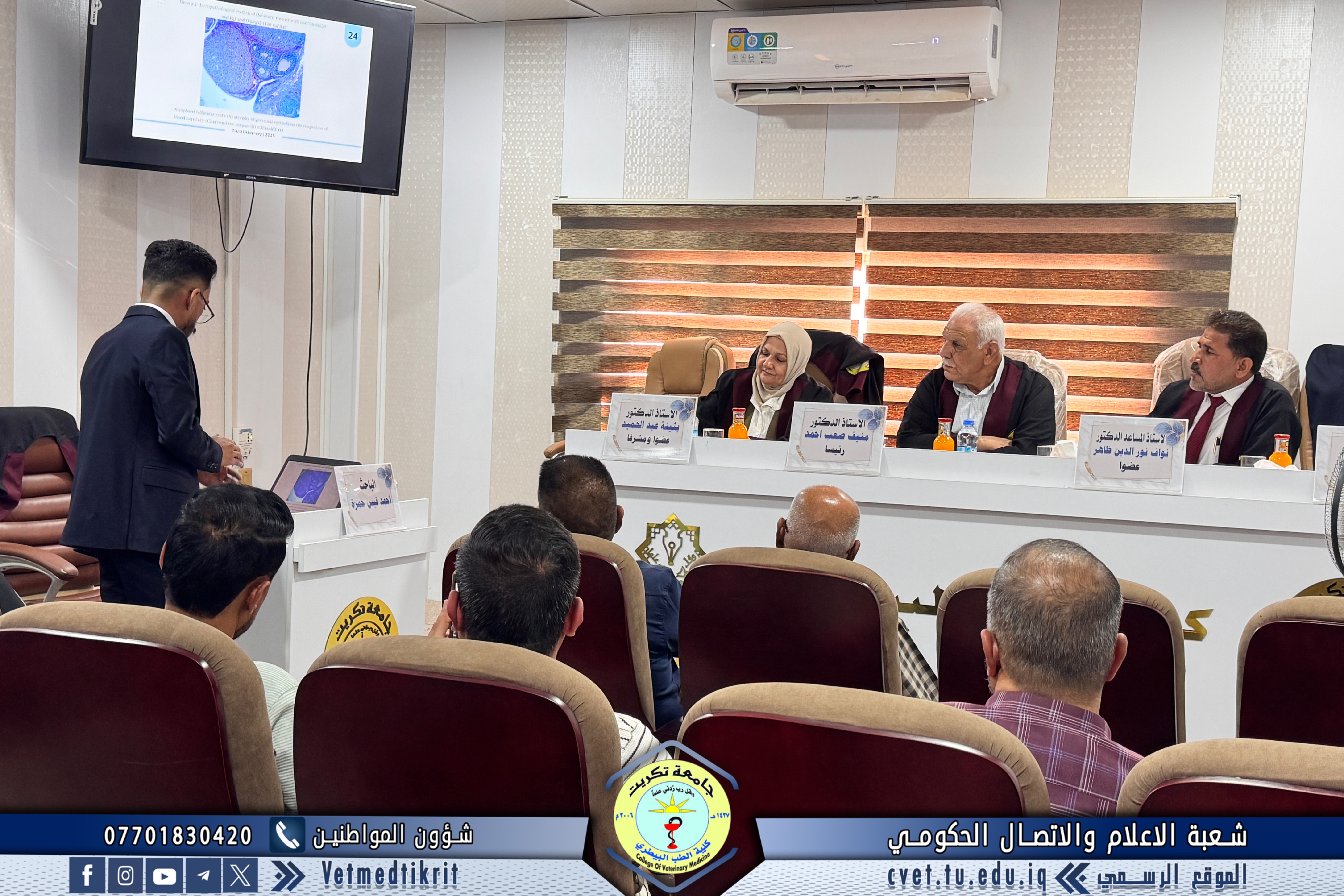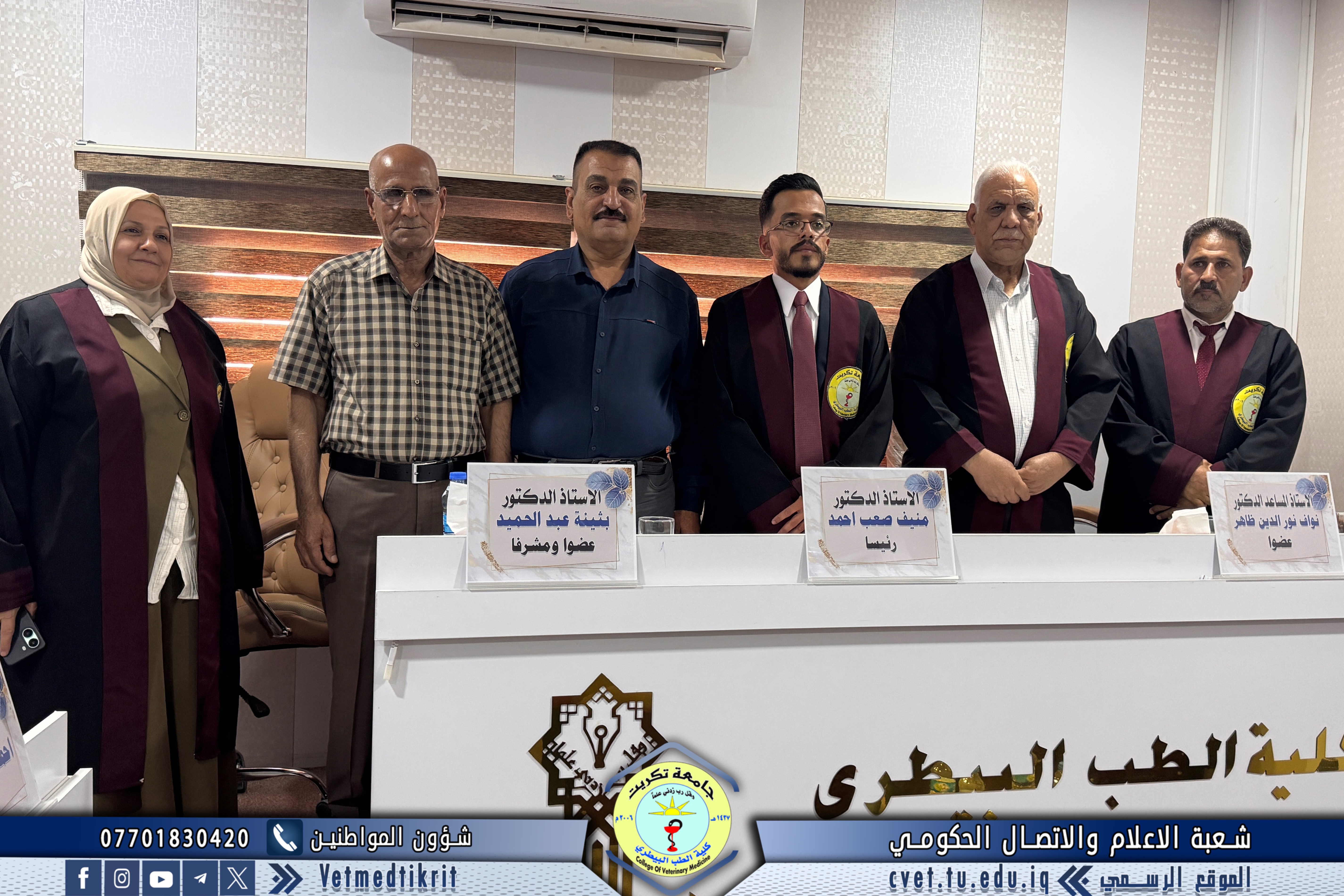With the blessing of Almighty God, the College of Veterinary Medicine at the University of Tikrit held a master’s thesis defense attended by Prof. Dr. Bashar Sadiq Noami, Dean of the College. The thesis, titled “Molecular Characterization of Trypanosoma Species in Cattle and Evaluation of Some Immunological Parameters in Diyala Province”, was presented by Khaldoun Khalil Abd Saleh in the specialty of Microbiology.
The examination committee consisted of:
Prof. Dr. Abdul Khaliq Alwan Muhimid – Parasitology, University of Tikrit / College of Science – Chairman
Prof. Dr. Wasan Amjad Ahmed – Veterinary Parasitology, University of Mosul / College of Veterinary Medicine – Member
Asst. Prof. Dr. Omar Thani Sharif Saeed – Internal and Preventive Medicine, University of Tikrit / College of Veterinary Medicine – Member
Prof. Dr. Omaima Ibrahim Mahmood – Parasitology, University of Tikrit / College of Veterinary Medicine – Member and Supervisor
Thesis Abstract:
This study aimed to determine the epidemiology of trypanosomiasis in cattle in Diyala Province and to identify environmental, climatic, and immunological factors influencing its prevalence. It represents the first study conducted in the province to detect this parasite. A total of 5 mL of jugular vein blood was collected from 550 cattle of different ages, both sexes, and from various regions during the period from July 2024 to May 2025.
Comprehensive clinical examinations revealed several symptoms indicative of infection, including pale mucous membranes (46.5%), lymph node enlargement (34.9%), severe emaciation and decreased milk production (23.3%), and fever (6.9%), while mortality reached 2.3%. Some infected cattle showed clear clinical signs, while 9.3% appeared clinically healthy.
Examination of Giemsa-stained blood smears revealed a trypanosome infection rate of 7.82%. According to thin and thick smear results, infection rates were 2.55% and 3.45%, respectively, with a combined rate of 1.82%, showing no statistically significant difference between the two methods (p > 0.05). Infection rates varied significantly by age, sex, and season — 11.3% in cattle over two years old compared to 2.0% in calves under one year. Females showed higher infection rates (9.7%) than males (2.04%). The infection peaked during hot and dry months (July–September) at 24%, dropping to nearly zero in December and January.
The overall infection rate in Diyala Province was 7.82%, distributed across 17 regions, with the highest rates recorded in Qarah Tapa (17.1%) and Bawo Mahmoud (14.3%). Several regions showed moderate to low rates, while three areas reported no infections. Infection was more common among cattle grazing near riverbanks.
For molecular detection, the use of Kin1 (ITS1) primers revealed parasite presence in 9 of 36 samples (25.0%), while Kin2 (ITS2) failed to detect any positive samples. The 25.0% molecular infection rate was confirmed by the 750 bp PCR product size.
Molecular analysis showed 100% sequence identity between the field isolate and the Trypanosoma congolense savannah strain, confirming diagnostic accuracy. BLAST results indicated high genetic similarity among isolates from different regions, with minor variations attributed to geographic factors.
From an immunological perspective, ELISA results showed a significant decrease in IL-6 levels (97.3 ± 26.86) in infected cattle, while IL-4 (12.127 ± 83.70) and TNF-α (7.02 ± 42.79) levels showed no significant differences between groups, despite some notable variations in values.
The defense session, held in Dr. Muhannad Maher Hall at the College of Veterinary Medicine, was attended by several faculty members and a group of students.
